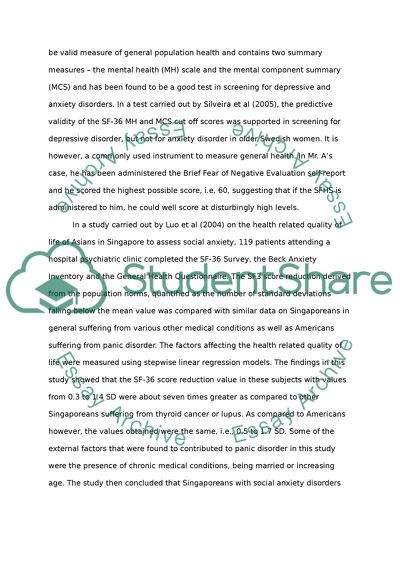Cite this document
(Social Anxiety Disorder Essay Example | Topics and Well Written Essays - 2750 words, n.d.)
Social Anxiety Disorder Essay Example | Topics and Well Written Essays - 2750 words. Retrieved from https://studentshare.org/health-sciences-medicine/1737725-critically-examine-the-empirical-literature-concerning-the-evidence-based-treatment-of-the-clients-disorder
Social Anxiety Disorder Essay Example | Topics and Well Written Essays - 2750 words. Retrieved from https://studentshare.org/health-sciences-medicine/1737725-critically-examine-the-empirical-literature-concerning-the-evidence-based-treatment-of-the-clients-disorder
(Social Anxiety Disorder Essay Example | Topics and Well Written Essays - 2750 Words)
Social Anxiety Disorder Essay Example | Topics and Well Written Essays - 2750 Words. https://studentshare.org/health-sciences-medicine/1737725-critically-examine-the-empirical-literature-concerning-the-evidence-based-treatment-of-the-clients-disorder.
Social Anxiety Disorder Essay Example | Topics and Well Written Essays - 2750 Words. https://studentshare.org/health-sciences-medicine/1737725-critically-examine-the-empirical-literature-concerning-the-evidence-based-treatment-of-the-clients-disorder.
“Social Anxiety Disorder Essay Example | Topics and Well Written Essays - 2750 Words”, n.d. https://studentshare.org/health-sciences-medicine/1737725-critically-examine-the-empirical-literature-concerning-the-evidence-based-treatment-of-the-clients-disorder.


